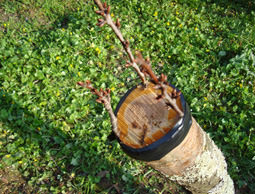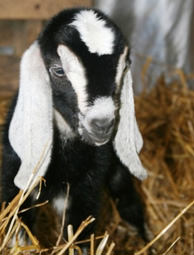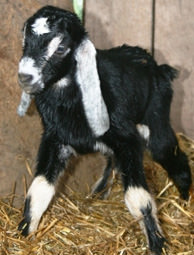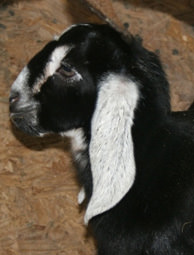Investing time and effort to identify your native plant’s niche is your key to finding a successful market. Native plants can serve a number of functions, such as production agriculture, conservation plantings and landscaping. While research on your part cannot be replaced with a Top10 list, use these 10 native plants as your guide to start your marketing venture:
1. Switchgrass (Panicum virgatum)
A versatile, tall, warm-season grass, Switchgrass comes many varieties and can be a great forage, hay and conservation plant, as well.
Hardiness zones: 5 to 9
Retail price: $6 to $18 per pound of seed
2. Indian Grass (Sorghastrum nutans)
A beautiful, tall, warm-season grass that has been a staple in conservation planting, Indian grass also can serve as forage and hay.
Hardiness zones: 4 to 9
Retail price: Around $11 per pound of seed
3. Big Bluestem (Andropogon gerardii)
An attractive, tall grass often planted with Indian grass, big bluestem is generally less dominant but can be a good forage and hay species.
Hardiness zones: 3 to 9
Retail price: $10 to $14 per pound of seed
4. Gamagrass (Tripsacum dactyloides)
An extremely leafy native grass, gamagrass has a seed similar to a corn kernel that’s often planted with a corn planter. Gamagrass is a premiere forage and hay grass. Compared to the other tall species, it performs especially well in wetter sites.
Hardiness zones: 4 to 10
Retail price: $9.50 to $13.50 per pound of seed
5. Little Bluestem (Schizachyrium scoparium)
The only native short-stature, warm-season grass to make the list, its name highlights its attractive bluish leaves, giving it potential for landscaping use. Little bluestem is gaining popularity in conservation plantings on drier sites, because it only reaches 3 feet in height and is less dominant.
Hardiness zones: 3 to 9
Retail price: $14 to $15 per pound of seed
6. Purple Coneflower (Echinacea purpurea)
A beautiful perennial wildflower that is commonly included in prairie-restoration mixes, purple coneflower attracts butterflies and makes a great choice for landscaping.
Hardiness zones: 7 to 9
Retail price: $30 to $42.50 per pound of seed
7. Maximilian Sunflower (Helianthus maximilianii)
Maximilian sunflower is a tall perennial that’s another staple in conservation plantings. It can be a great addition to landscape designs, because it attracts butterflies and seeds are used by wildlife.
Hardiness zones: 4 to 10
Retail price: $30 to $47.50 per pound of seed
8. New England Aster (Aster novae-angliae)
The purple flower and arrow-shaped leaves of the New England aster make it one of the most showy asters. It’s a perennial worthy of consideration in any flower bed and finds its way into conservation plantings, too. Its price range is set higher due to its minute seeds.
Hardiness zones: 3 to 9
Retail price: $181.50 to $300 per pound of seed
9. Black-eyed Susan (Rudbeckia hirta)
A well-known wildflower that finds its way into nurseries and home-and-garden shops, Black-eyed Susans are worthy of a place in a flower bed and commonly inserted into conservation plantings.
Hardiness zones: 3 to 9
Retail price: $23 to $29 per pound of seed
10. Soft Rush (Juncus effuses)
Soft rush is a common plant wetland plant in mitigation mixes and wetland restoration mixes. It can grow on damp sites for production purposes. It is a showy rush, so it can be sold in conjunction with water features. It is best planted with plugs.
Hardiness zones: 4 to 10
Retail price: $91 to $200 per pound of seed
No matter what native plant you choose to market, finding one that suits your area makes your product unique. Spend time looking for a natural source of seed to start your native-plant operation. Take advantage of natural-resource professionals or non-governmental organizations, such as the Nature Conservancy, that specialize in natural-resource conservation. Personnel from fish and wildlife, forestry, and parks or preserves agencies can identify native-plant remnants in your area.
Choose to gather native-plant seeds from sites as close to your farm as possible. The closer the seed source, the more likely the plant historically adapted to your local conditions. Remember to get permission before you harvest seed, and keep records of your seed-source locations.
Consider these native-plant categories:
- Native grasses represent the best avenue to begin in the native-seed market. They are commonly used in USDA Farm Bill conservation programs. Native warm-season grasses are gaining notoriety as forage and hay because they are drought resistant, require little fertilization and grow actively in the mid- to late-summer, when cool-season forages are largely dormant. Both tall and short species of native grasses can be used in landscaping.
- Native wildflowers, like native grasses, are also regularly included in USDA Farm Bill conservation plantings. Concerns regarding pollinators provide opportunities for wildflowers to be sold for conservation purposes. Wildflower perennials continue to gain popularity in landscaping, because they are low-maintenance and showy.
- Native wetland plants are more challenging to establish and manage. They require wetter sites than other species. Wetland plants can be used in landscaping, particularly with water features.
About the Author: John Morgan is a certified wildlife biologist with degrees from Penn State University and the University of Georgia. He, his wife and his daughter live on a hobby farm in Kentucky, where they’ve converted all of their fields to native plants.


























